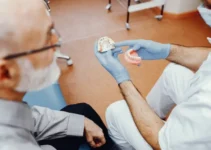Understanding fertility can be challenging due to the numerous misconceptions circulating in society. From age-related fertility concerns to lifestyle factors, couples often encounter a mix of facts and myths that can affect their family planning decisions. This comprehensive look at fertility myths and realities provides evidence-based information to help couples make informed choices about their reproductive health.
Common fertility myths debunked
In the complex journey of conception, numerous misconceptions can lead couples astray from making informed decisions about their reproductive health. Understanding the difference between fertility myths and scientific facts is crucial for those trying to conceive, as misinformation can cause unnecessary stress and potentially delay seeking proper medical attention.
Medical research has consistently shown that fertility issues affect approximately 15% of couples worldwide, yet many continue to base their reproductive decisions on outdated or incorrect information. Modern reproductive medicine has made significant advances in understanding the factors that truly impact fertility, helping to dispel long-standing myths that have persisted through generations.

Age-related fertility misconceptions
One of the most persistent myths involves the relationship between age and fertility. While many believe that women can easily conceive well into their 40s, the scientific reality is that female fertility begins to decline significantly after age 35. Studies show that the probability of natural conception decreases from 25% per month in women’s early 20s to less than 5% by age 40. Men’s fertility also faces age-related challenges, though less dramatic than women’s. Research indicates that sperm quality and quantity gradually decline after age 40, potentially leading to:
- Decreased sperm motility
- Reduced sperm count
- Increased DNA fragmentation
- Higher risk of genetic abnormalities in offspring
Statistical data from fertility clinics worldwide demonstrates that success rates for assisted reproductive technologies also correlate strongly with age. Women under 35 have approximately a 32% chance of live birth per IVF cycle, while this rate drops to about 12% for women over 40.Lifestyle factors and fertility myths
Many couples believe in various lifestyle “tricks” to enhance fertility, but scientific evidence supports only some of these beliefs. Research-backed lifestyle factors that actually impact fertility include:
- Maintaining a healthy BMI range
- Avoiding excessive alcohol consumption
- Quitting smoking
- Managing stress levels
- Following a balanced diet rich in antioxidants
Contrary to popular belief, moderate exercise does not harm fertility. In fact, studies show that regular, moderate physical activity can improve reproductive health in both men and women. However, excessive high-intensity exercise may impact ovulation in some women.
The myth that certain sexual positions increase conception chances has been thoroughly debunked by scientific research. The position during intercourse has no significant impact on fertility, as sperm cells can travel through the reproductive tract regardless of gravitational influences.
Understanding these evidence-based realities about fertility can help couples make better-informed decisions about their reproductive journey. For more detailed information about specific fertility treatments and advanced reproductive technologies, we encourage you to explore our other comprehensive articles on assisted reproduction and fertility optimization.
Myths and realities about fertility: What couples should know
When couples embark on their fertility journey, they often encounter various treatment options. One innovative approach involves PRGF-Endoret® technology, which has shown promising results in improving embryo transfer success rates. Let’s address a common question about this treatment.
How does PRGF-Endoret® treatment work to improve embryo transfer success?
PRGF-Endoret® is an advanced treatment that requires just one blood extraction to create a specialized solution for two embryo transfers. The unique fibrin-free formulation is designed to avoid interference with embryo implantation. The treatment involves three carefully timed instillations of 1ml each, and the solution can be prepared at any point in the menstrual cycle. Studies suggest this approach may reduce implantation failure rates by up to 50%. The solution can be stored frozen at -20°C for up to one year, providing flexibility in treatment timing.




